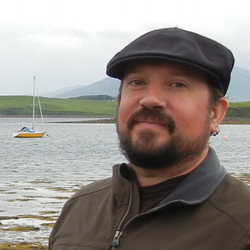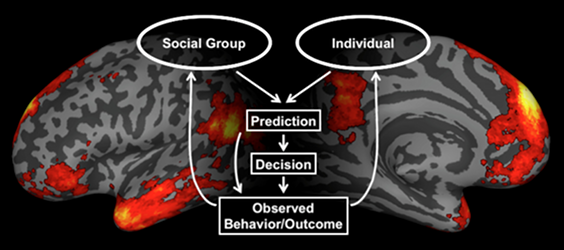

Damian A. Stanley
Email:
dstanley @ adelphi.edu
Manuscripts in preparation / Under revision
Han, Y., the COVID-Dynamic Team, & Adolphs, R. (in prep) A shared structure for emotion experiences from narratives, videos and everyday life.
Rusch, T., the COVID-Dynamic Team, & Stanley, D. (in prep). The dynamics of implicit and explicit attitudes towards Black-Americans across the first year of the COVID-19 pandemic.
Weiss, M., Gette, J., Lopez-Castro, T., the COVID-Dynamic Team, & Stanley, D. (in prep). Intersectional Impacts of Discrimination on Mental Health Disparities in Stress, Anxiety and Depressive Symptomatology During the COVID-19 Pandemic.
Bauer, A., Rusch, T., Lopez-Castro, T., Swarbrick, M., Paul, L., Hien, D., the COVID-Dynamic Team, & Stanley, D. (in prep). Individual attitudes towards the COVID-19 pandemic in context.
Stanley, D. (in prep). Quantifying differences in social and nonsocial learning with model-based approaches and EEG.
Han, Y., the COVID-Dynamic Team, & Adolphs, R. (under revision). Trait resilience protects against depression caused by loneliness during the COVID pandemic.
Rouhani, N., Stanley, D., the COVID-Dynamic Team, & Adolphs R (under review). Collective events and individual affect shape autobiographical memory.
Papini, S., Lopez-Castro, T., Swarbrick, M., Paul, L., Stanley, D., Bauer, A., the COVID-Dynamic Team, & Hien, D. (under review). Alcohol, cannabis, and nicotine use have common and distinct associations with COVID-19 pandemic-related experiences: A Bayesian network analysis across two timepoints.
Stanley, D., Stanley, J., Piech, R., & O’Doherty, J. (in prep). Distinct neural contributions to observational learning derived from facial expressions versus words.
Publications
Rusch. T., Han. Y., Liang. D., Hopkins, A., Lawrence, C., Maoz, U., Paul, L., Stanley, D. & the COVID-Dynamic Team (2023). COVID-Dynamic: A large-scale longitudinal study of socioemotional and behavioral change across the pandemic. Scientific Data – Nature 10, 71. https://doi.org/10.1038/s41597-022-01901 Open Access Link
Lopez-Castro, T., Papini, S., Bauer, A., Swarbrick, M., Paul, L., Nizzi, M., Stanley,D.,, the COVID-Dynamic Team, & Hien, D. (2022). Posttraumatic stress disorder symptom trajectories in a 16-month COVID-19 pandemic period. Journal of Traumatic Stress. Advance online publication; doi:https://doi.org/10.31234/osf.io/wpjgm request pdf
Lawrence, C. & the COVID-Dynamic Team (2020). Masking Up: A COVID-19 Face-off between Anti-Mask Laws and Mandatory Mask Orders for Black Americans. 11 California Law Review Online 479, doi: https://doi.org/10.15779/Z38MS3K25C request pdf
Rosenthal, I., Hutcherson, C., Adolphs, R., Stanley, D. (2019). Deconstructing theory-of-mind impairment in high-functioning adults with autism. Current Biology. (available online) pdf
Stanley, D. (2016). Getting to know you: specific neural computations for learning about people. Social, Cognitive, and Affective Neuroscience, 11(4): 525-536. doi:10.1093/scan/nsv145. pdf
Birmingham, E., Stanley, D. (corresponding and joint first author), Nair, R., & Adolphs, R. (2015). Implicit social biases in people with autism. Psychological Science, 26(11): 1693-1705. doi:10.1177/0956797615595607 pdf
Stanley, D. & Adolphs, R. (2013). Toward a neural basis for social behavior. Neuron, 80(3): 816-826. pdf
Stanley, D., Sokol-Hessner, P., Fareri, D., Perino, M., Deglado, M., Banaji, M., & Phelps, E. (2012). Race and Reputation: Perceived racial group trustworthiness influences the neural correlates of trust decisions. Philosophical Transactions of the Royal Society B: Biological Sciences. 367:744-753 pdf
Stanley, D., Sokol-Hessner, P., Banaji, M., & Phelps, E. (2011). Implicit race attitudes predict trustworthiness judgments and economic trust decisions. Proceedings of the National Academy of Sciences, 108 (19) 7710-7715. pdf
Stanley, D., Sokol-Hessner, P., Banaji, M., & Phelps, E. (2011). Reply to Krueger: Good point, wrong paper. Proceedings of the National Academy of Sciences, 108(32) E411 pdf
Ferneyhough, E., Stanley, D., Phelps, E., & Carrasco, M. (2010). Cuing Effects of Faces are dependent on handedness and visual field. Psychonomic Bulletin & Review. 17(4):529-535 pdf
Stanley, D., Ferneyhough, E., & Phelps, E. (2009). Neural perspectives on emotion: Impact on perception, attention and memory. In the Handbook of Neuroscience for the Behavioral Sciences, Ed. Berntson, G.G. & Cacciopo, J.T., John Wiley and Sons pdf
Stanley, D., Phelps, E., & Banaji, M. (2008). The neural basis of implicit attitudes. Current Directions in Psychological Science. 17(2):164-170. pdf
Heller, R., Stanley, D., Yekutieli, D., Rubin, N. & Benjamini, Y. (2006). Cluster-based analysis of fMRI data. NeuroImage 33, 2, 599-608 pdf
Stanley, D. & Rubin, N. (2005). Rapid detection of salient regions: Evidence from apparent motion. Journal of Vision 5, 690-701. pdf
Stanley, D. & Rubin, N. (2003). fMRI activation in response to illusory contours and salient regions in the human Lateral Occipital Complex. Neuron 37, 323-331. pdf
Epstein, R., Harris, A., Stanley, D. & Kanwisher, N. (1999). The parahippocampal place area: recognition, navigation, or encoding? Neuron 23, 115-125. pdf
Kanwisher, N., Stanley, D. & Harris A. (1999). The fusiform face area is selective for faces not animals. NeuroReport 10, 183-187. pdf
Conover, S., Berkman, A., Gheith, A., Jahiel, R., Stanley, D., Geller, P., Valencia, E. & Susser, E. (1997). Methods for successful follow-up of elusive urban populations: An ethnographic approach with homeless men. Bull. N.Y. Acad Med. 74(1): 90–108. pdf